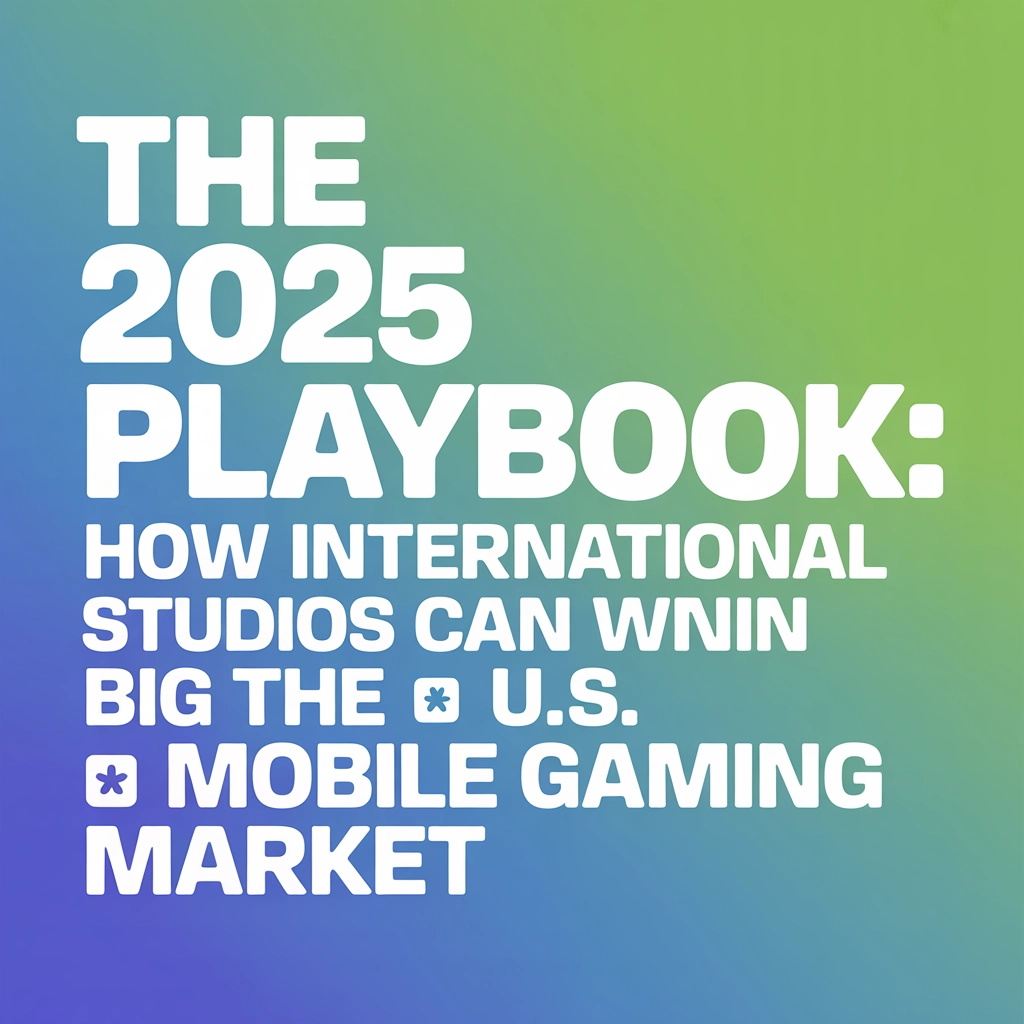The 2025 Playbook: How International Studios Can Win Big in the U.S. Mobile Gaming Market

Understanding the U.S. Mobile Gaming Landscape in 2025
The U.S. mobile gaming market is still the world’s #1 earner, raking in a massive $20.8 billion in revenue. But here's the catch: growth has practically flatlined, with only a 0.05% increase year-over-year. Compare that to surging markets like Turkey (+28%), Mexico (+21%), and India (+17%), and you’ll see why the U.S. is considered both the holy grail and a major challenge for international game studios.
For studios eyeing expansion, this means the U.S. isn’t just another target territory—it’s a fiercely competitive arena where only the most adaptive, data-driven, and innovative projects will stand out. The rules are stricter, the stakes are higher, and the need to bring your A-game has never been greater.
The Opportunity Beneath the Surface
It’s tempting to be discouraged by mature-market talk, but look closer—there’s huge life left in the U.S. scene. Mobile gaming sessions are up over 12% year-over-year, in-app purchase (IAP) revenue is climbing, and players are spending 8% more time in games. The market is starving for exceptional experiences.
So, what does it take for international studios to win in America? Here’s your 2025 playbook—no fluff, just real tactics.

1. Go Beyond Launch: Build for Long-Term IP Value
The days of “launch and leave” are over. U.S. players expect ongoing content and real engagement with game worlds and characters. The magic formula isn’t just great gameplay; it’s investing in intellectual property (IP) that keeps players coming back for months—or even years.
- Develop Universes, Not Just Games: Look how top studios grow single IPs into franchises, merchandise, animated series, and more.
- Content Roadmaps Matter: Chart multi-year updates and events before you launch. Planning for the long haul boosts retention and player spend.
- Cross-Media Expansion: Consider narrative tools, comics, or TikTok/YouTube crossovers to deepen fans’ connections.
2. Leverage Hybrid Monetization—and Design for It Early
Trying to add monetization after you launch? That's a fast track to missing your targets. The U.S. market is dominated by free-to-play, but the real winners blend in-app purchases (IAP) with ad revenue from day one.
- Hybrid Done Right: The most successful games mix rewarding, non-intrusive ads with attractive, fair IAP packages.
- Personalize Offers: Use player data (ethically) to serve IAP deals and ads tailored to behaviors, boosting both spend and satisfaction.
Pro Tip: If you’re unsure where to start on hybrid models, tap into analytics companies or consult experts in hybrid design from the outset.
3. Master User Acquisition in a Privacy-First Era
Since iOS privacy updates, user acquisition (UA) isn’t what it used to be. Targeting is trickier, costs are up, and creative matters more than ever.
- Creative Testing is King: Refresh and test ad creatives frequently. What hooked users last year might flop this year.
- Diversify Channels: Beyond Facebook/Google, explore TikTok, influencers, Discord communities, plus playable ads on niche networks.
- First-Party Data is Gold: Build a direct relationship with your players wherever you can. This shields you from sudden shifts in platform policy.

4. Direct-to-Consumer (D2C): Circumvent Platform Fees (Where Possible)
Apple and Google still take their 30%, but winds are changing. With the Digital Markets Act and Android's evolving policies, more studios are moving to direct-to-consumer models—think off-platform web shops and alternative app stores.
- D2C in Action: Big names like Playtika have shifted millions in revenue off-platform, dodging commissions and owning the player relationship.
- Set Up Early: Launch a companion web shop or support alternative payment flows in your app to future-proof your business.
5. Data and Analytics: Your Secret Weapon
Every top-performing studio relies on deep, actionable analytics—tracking everything from player churn to purchase triggers and viral sharing.
- Robust Analytics Infrastructure: Invest in dashboards and predictive models to guide updates, offers, and creative changes.
- A/B Test Relentlessly: Seemingly minor tweaks in tutorial flow, shop layout, or daily rewards can mean major revenue gains.

6. Don’t Ignore the Regulatory Shift
Watch the changing legal landscape. The U.S. and EU are moving toward more open competition in app distribution and payments. Get a legal advisor who keeps you ahead—being ready for opportunity means grabbing it before your competitors do.
7. Bring Fewer, Better Games—and Make Them Original
There’s no room for rushed clones. The message from the 2025 market is clear: international studios win with distinctive, original titles built on fresh IP.
- Quality Over Quantity: Polish, optimize, and iterate before launch.
- Retention Beats Installs: The top-grossing games focus relentlessly on keeping players, not just acquiring installs. A loyal core means steadier revenue.

Final Thoughts: The Road Ahead
The U.S. is a tough but rewarding landscape for international mobile studios. Growth may be slower than in emerging markets, but spend per player and engagement can be dramatically higher if you play the long game and execute strategically.
Let’s recap the essentials:
- Plan for IP longevity, not just launch week hype.
- Build hybrid monetization in from day one.
- Get creative and nimble with UA, especially as privacy rules tighten.
- Move quickly on D2C and platform workarounds as new options open up.
- Put robust data and analytics at the heart of your ops.
- Watch regulatory changes and prepare to pivot.
- Focus resources on unique, high-quality games with powerful retention hooks.
For more on how Systara helps studios navigate every step of the journey, check out our portfolio: Systara Games
America’s mobile gamers are ready for your next hit—are you?






